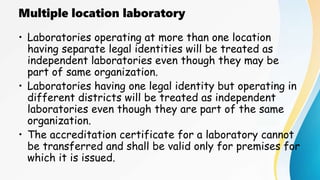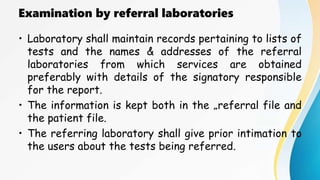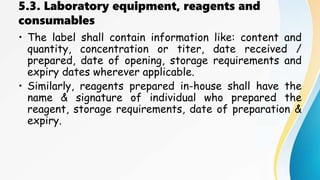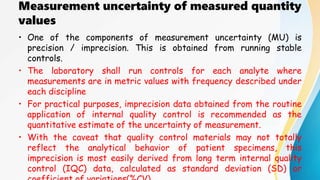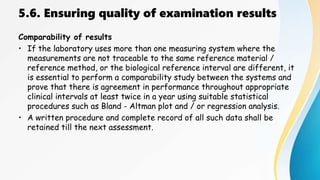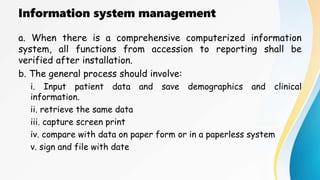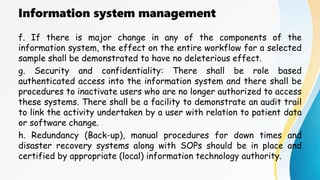The document outlines the gap analysis for NABL accreditation standards in various clinical laboratory disciplines from 2008 to 2019, detailing scopes, ethical considerations, quality requirements, and compliance procedures. It emphasizes the need for laboratories to maintain comprehensive test lists, adhere to local regulations, and conduct internal audits to meet NABL norms. Additionally, it covers aspects of equipment calibration, measurement uncertainty, and the management of test results, including the handling of sensitive tests and waste management protocols.









